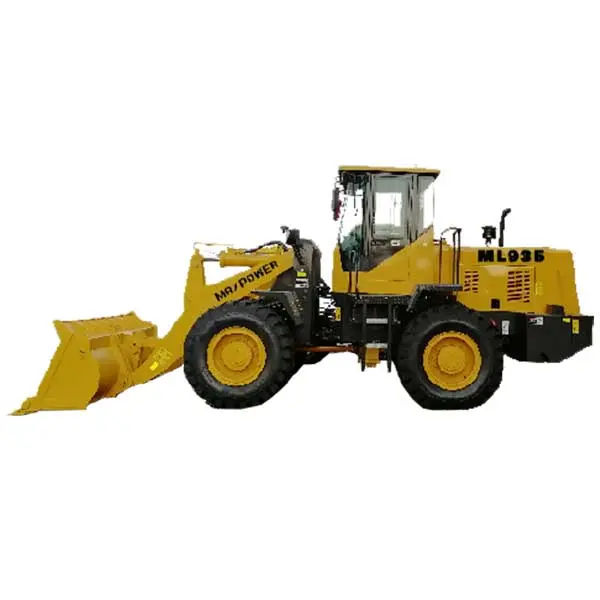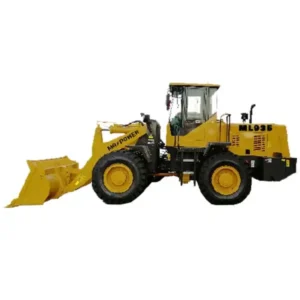Introduction
Wheel loaders are multipurpose machines relied upon across construction sites, mines, quarries, factories, warehouses, farms, and more. Their unique ability to powerfully scoop, lift, and haul loose materials makes loaders indispensable for productivity.
However, these rugged, high-performance workhorses require diligent maintenance to sustain smooth operation, maximize uptime, and extend service lifetime. This blog reveals 10 vital maintenance tips that all loader owners should follow. Adopting consistent maintenance best practices will minimize repair headaches and downtime while optimizing wheel loader productivity.
The 10 Maintenance Golden Rules

Here are the 10 essential principals for maximizing and safeguarding wheel loader performance:
Stick to Maintenance Schedules
Meticulously following the manufacturer maintenance schedule for changes of fluids, filters, wear parts inspections, and lubrication is absolutely imperative. This prevents premature component failure.
Inspect Tires & Chassis Daily
Check tire pressure and tread wear daily, watching for obstacles that could damage wheels or the chassis. Addressing issues early on avoids much bigger problems later.
Examine Hydraulic System Monthly
Inspect hydraulic hoses, cylinders, pumps, and valves monthly for any leaks or loose connections needing repair. This system is the loader’s lifeblood.
Clean Air Filters Proactively
Check air filters frequently as they easily get clogged by dust/debris. Follow guidelines for cleaning vs replacement. A clean air supply bolsters engine efficiency.
Grease Bearings Regularly
Ensure all bearings stay optimally lubricated to reduce wear. Make bearing greasing part of a consistent schedule.
Check Coolant System & Radiator
Inspect coolant levels, test quality, check for leaks, flush routinely, and clear the radiator of debris. This governs the loader powertrain’s health.
Monitor Electrical Wiring
Examine condition of wiring harnesses for fraying/loose connections and keep battery terminals/connections completely clean. Electrical issues quickly cripple loaders.
Gauge Fuel System Integrity
Check for debris in the fuel tank, leaks anywhere in fuel lines/injectors, and ensure quality filtration to avoid shutdowns.
Analyze Operational Data
Telemetry systems capturing loader usage metrics help optimize maintenance planning. Reviewing data identifies rising issues.
Respond to Warning Lights
Never ignore warning lights or error codes. Diagnose codes promptly to prevent minor problems from cascading into major repairs.
Adhering to those fundamental maintenance principles enables loaders to sustainably deliver maximum uptime and return on investment. Now let’s explore some specific maintenance procedures and component guidelines.
wheel loader:Prime Maintenance Focus Zones

Maintaining wheel loader operational excellence requires concentrating on several key systems:
Loader Buckets – Replace cutting edges and side cutters before excessive wear compromises performance. Use anti-abrasion bucket liners to prolong usefulness.
Drivetrain & Filters – Closely follow the prescribed maintenance intervals for oil/filter changes in engines, axles, and transmissions per the manufacturer specifications.
Tires – Check inflation pressure and tread depth routinely. Rotate tires to balance wear patterns. Keep loads within rated capacity.
Hydraulic System – Flush and replace hydraulic fluid as scheduled. Examine cylinders, pumps, valves, and hoses for leaks/damage frequently.
Brakes & Steering – Evenly adjust brakes avoiding pulls. Lubricate steering joint. Verify hydraulic fluid levels for brake/steering circuits.
Undercarriage & Chassis – Examine machine underside and structure for damage, cracks, loose/missing bolts that require repair.
Electrical Connections – Clean battery posts and check terminals/harnesses routinely for tight, corrosion-free connections enabling strong electrical flow.
Proper Care From Day One
The best way to maximize long-term wheel loader productivity is being scrupulously diligent about scheduled maintenance starting immediately after purchase. Following prescribed maintenance always pays dividends over the full lifecycle.
Table 1 shows the estimated lifecycle of loader components given proper care:
| Composant | Lifecycle |
|---|---|
| Moteur | Over 50,000 hours |
| Transmission | 15,000 – 30,000 hours |
| Hydraulique | 15,000 – 30,000 hours |
| Tires | 5,000 – 10,000 hours |
| Battery | 3-5 years |
Conclusion
Like any complex machinery, wheel loaders rely on diligent preventative maintenance to sustain optimal performance, fuel efficiency, longevity, and resale value. Ignoring maintenance inevitability results in unwelcome breakdowns, costly emergency repairs, idle downtime, and rapid asset depreciation. Leveraging telematics, adhering to prescribed schedules, responding promptly to alerts, and fixing problems before cascading into larger issues is key. Just a few hours of thoughtful care invested monthly pays off exponentially over a fleet’s operating lifetime. Staying on top of maintenance keeps loaders productively moving materials on schedules and budgets.
FAQ
What are the most important loader fluids to monitor?
Check engine oil, hydraulic oil, transmission fluid, axle fluid, brake fluid, and coolant level/quality plus fuel filters very regularly. Top up fluids immediately if low.
What are signs a wheel loader requires repair?
Warning signs include abnormal noises, visible leaks, smoke, drops in power or performance, fluid consumption changes, touching hot parts, and unusual vibrations.
What technology aids loader maintenance?
Telematics systems provide real-time equipment data for analyzing usage metrics and diagnosing problems early. Remote machine monitoring enables quicker preventative action.
Should lubrication be left to operators or maintenance crews?
Dedicated maintenance teams should handle lubrication on schedules to ensure proper greasing at all necessary points to prevent premature wear issues.
What environmental factors influence wheel loader maintenance needs?
Operation in dusty, muddy, or extreme cold/hot climates accelerates wear on components like air filters, hydraulics, tires, and drivetrains – necessitating more frequent maintenance.








-150x150.webp)
